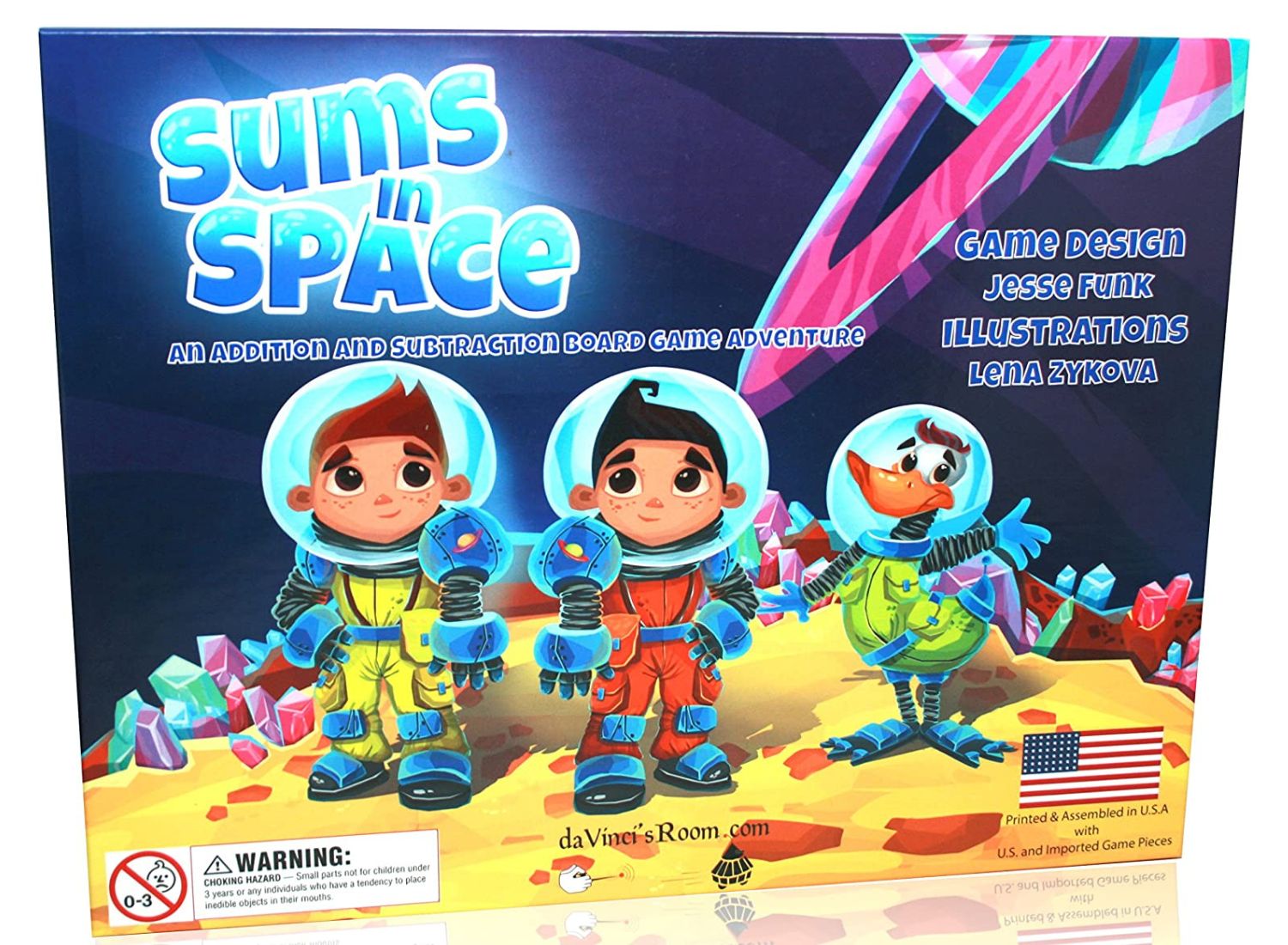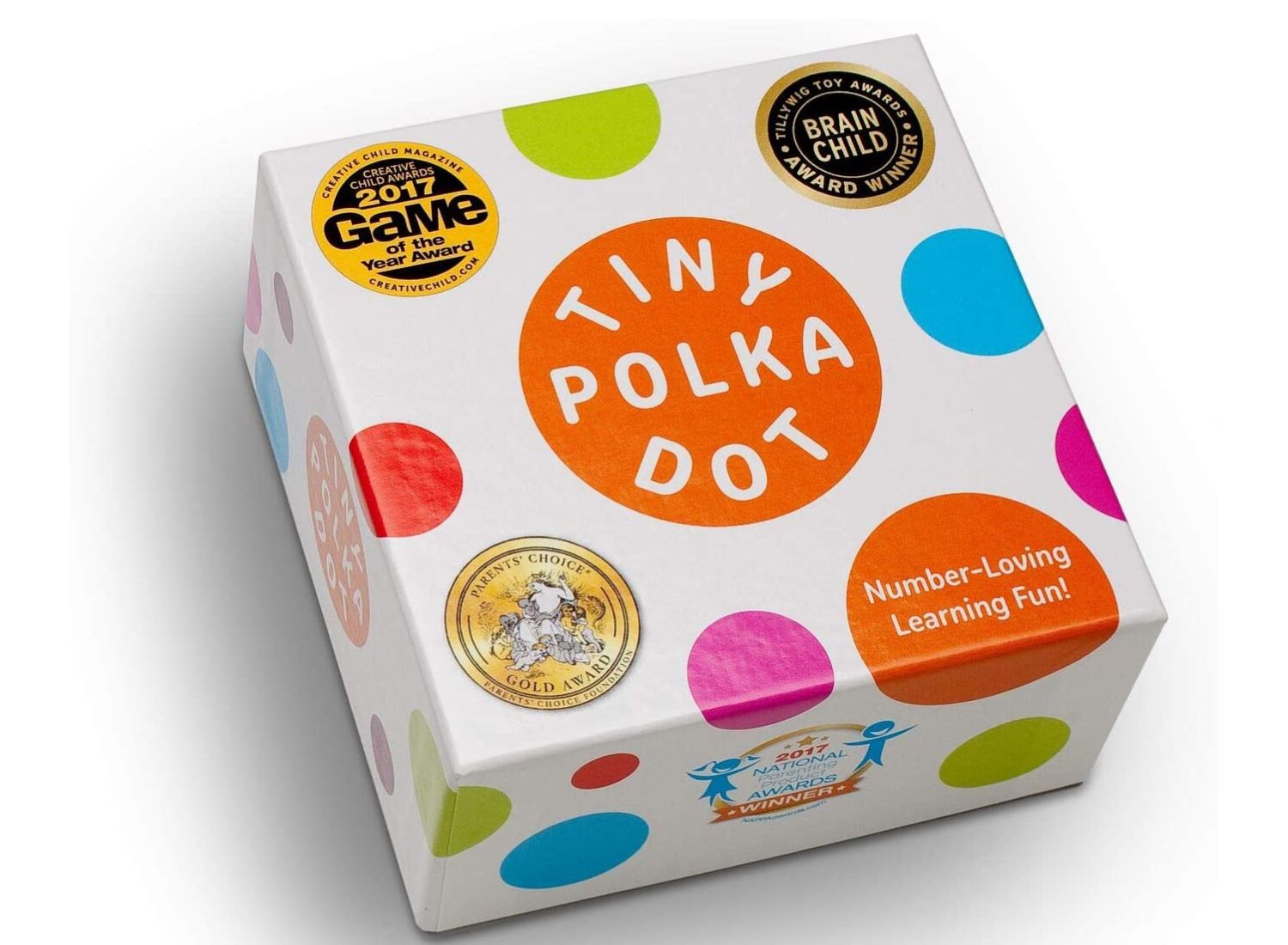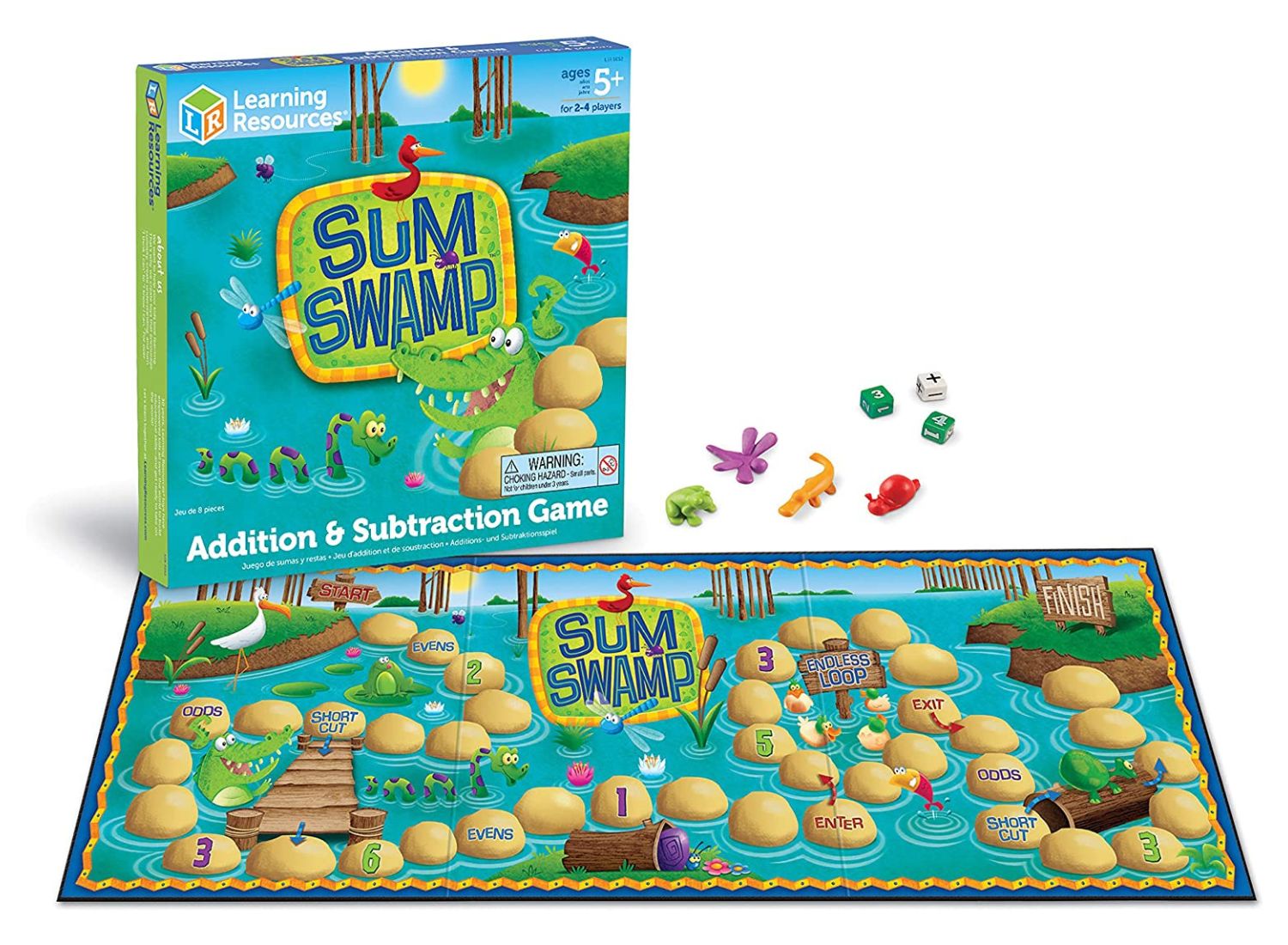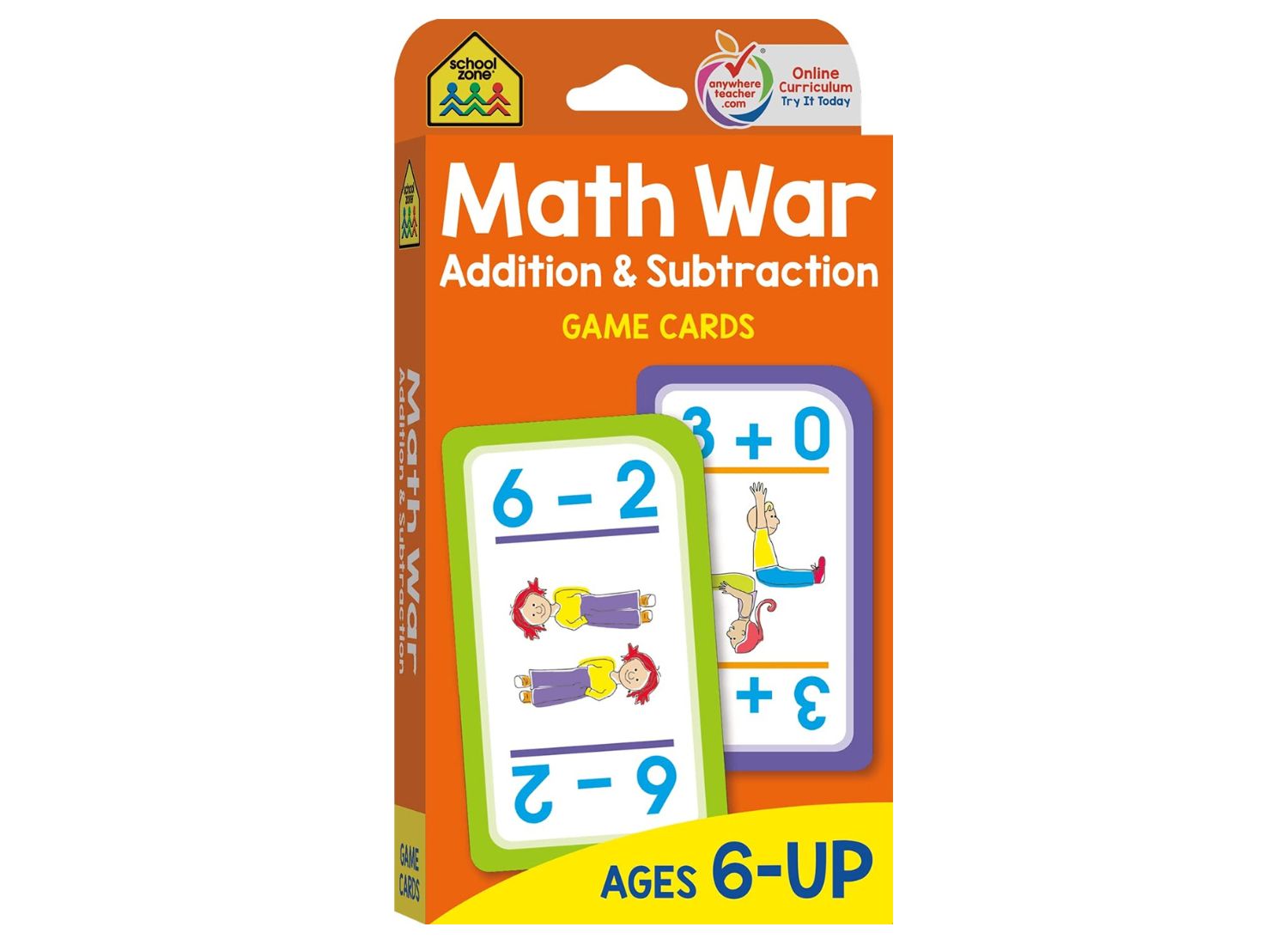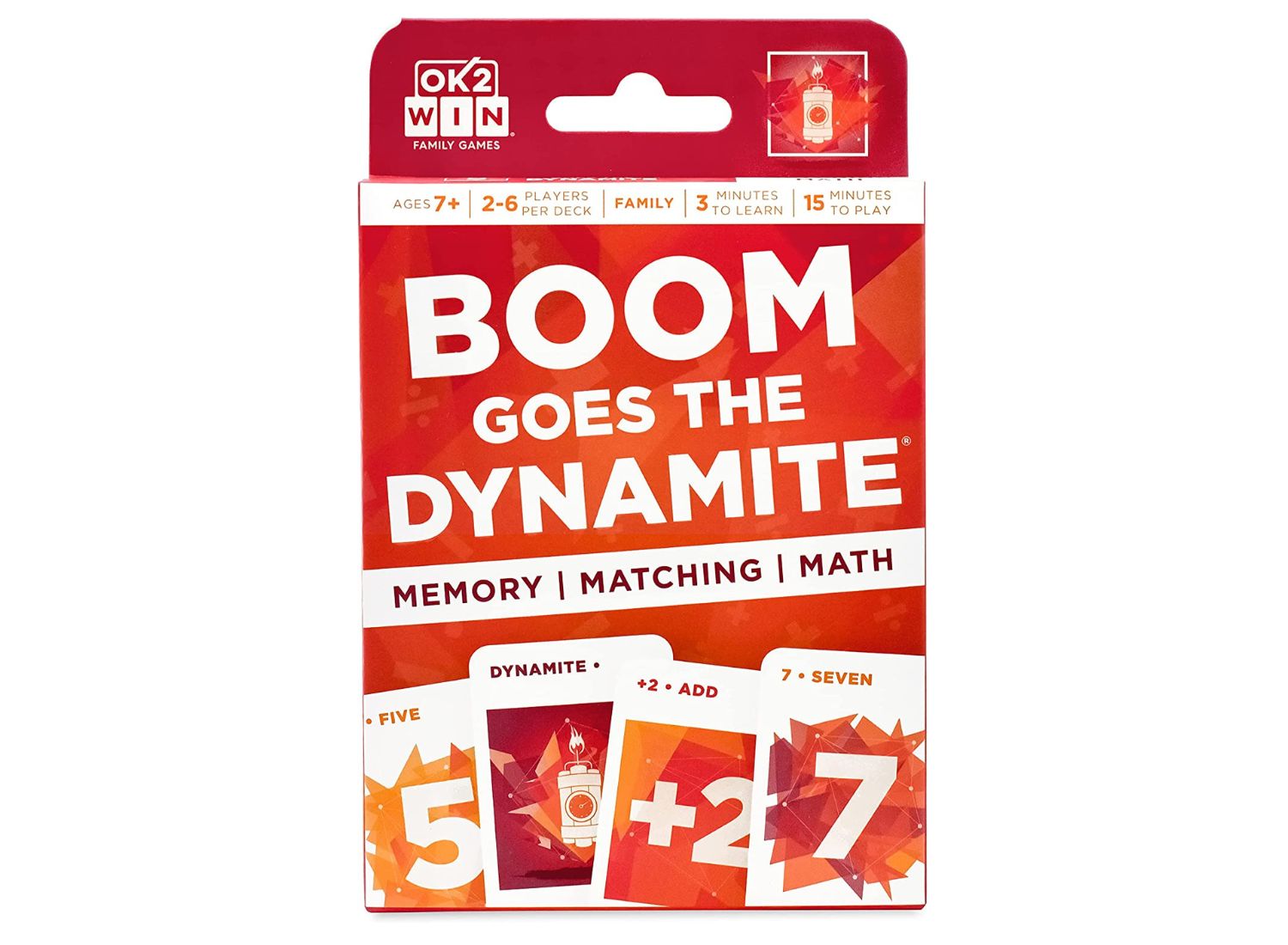The Best Math Games for Kids of 2024
Learning math is a necessity for many children, but it doesn’t have to be a chore. Math games are a great way to help kids learn math concepts in a fun and interactive way. These games help develop cognitive skills, such as problem-solving and logical thinking, while also nurturing a positive attitude towards math, making it an enjoyable subject for kids to learn.
We’ve scoured the internet to find you the leading math games for kids to help ensure your kid is engaged while learning. Whether you’re looking for a game to entertain your kids on a rainy day or one to help them master their arithmetic skills, we’ve got you covered.
Buying Guide: Math Games for Kids
The right math game can provide children with an enjoyable experience. Many parents are looking for engaging, educational, and fun games for their children. To help you make your decision when choosing a math game for your child, here’s a buyer’s guide that takes into account the most important features of math games for kids.
Age Appropriateness
When choosing a math game, look for one suitable for your child’s age range. Many math games are designed with different age groups in mind, so find one that will challenge and engage them. You should also consider the game’s content and ensure it aligns with their current curriculum or skill level.
Educational Content
The educational content should cover key mathematical concepts such as problem-solving, operations, and other mathematical principles. It’s also essential to make sure that each of these elements is explained in an easy-to-understand manner so that children can understand and apply them while playing the game.
Some educational math games also include various activities and mini-games to reinforce learning and ensure children fully understand each concept before moving on to more difficult ones.
Interactive
It’s essential to pick out a math game for kids that keeps them engaged and interested in the game. This can include mini-games, puzzles, quizzes, and other fun challenges. This will help children learn better since they will be actively engaged in learning new concepts instead of just passively observing them. Additionally, interactive activities can help children develop problem-solving skills and hand-eye coordination.
Type of Platform
Math games are available on various platforms, such as mobile devices, consoles, and computers. When selecting a math game for kids, it’s essential to consider which platform will work for them depending on their desired gaming experience or learning style. For example, if they prefer more interactive experiences, they may prefer a console or computer version, while if they prefer a more portable experience, they may be better suited to a mobile version. Some platforms may offer additional features, such as multiplayer support, which may be useful when selecting a math game for kids.
Visuals and Sound Effects
Visuals and sound effects are important in keeping children interested in the game. The visuals of a math game for kids should be captivating and interesting to look at, while sound effects should be engaging enough to stimulate their auditory senses. Additionally, visuals should not be overly complicated, so children can easily understand them without feeling overwhelmed. Fun animations can also help create an enjoyable environment and make learning fun for kids.
Quality and Durability
Quality materials ensure that key components such as buttons and screens don’t break easily, which can lead to frustration or even injury. Durability also means that the product should hold up against normal wear over time. That’s why you should consider quality closely before purchasing to ensure it meets these standards before committing to buying the product.
The Best Math Games for Kids
da Vinci’s Room Math Game – Best Overall
The da Vinci’s Room Math Game is a great way to engage your child’s mathematical skills. Perfect for first-grade students, this game teaches essential math facts such as addition and subtraction from zero to nine, comparing numbers, and learning odds and evens. It provides three difficulty levels for cooperative play, allowing children to build their essential math skills regardless of age.
It includes classic competitive game rules so that players can race against each other to be the first to complete the addition or subtraction task. The rules are easy enough to follow, making it possible for younger players to understand them. In addition to its educational uses, this math game provides plenty of imaginative adventures for your child. Its engaging story takes your little one on a thrilling journey through space, inspiring their creativity and sparking their imaginations. With competitive rules and interesting equations, this math game earns the top spot on our list.
Pros
- Made from safe and non-toxic materials
- Creative design and interesting content
- Suitable for three-year-olds to teens
Cons
- Maximum sum limit of 10
Math for Love Math Game – Most Comprehensive
The Math for Love Math Game is an engaging and comprehensive learning game designed to help kids fall in love with numbers. Experienced educators designed this set of sixteen engaging games that teach counting, arithmetic, and logic. Each game has been designed to be easy to adapt for any child, making it a great tool for families with children of different ages and learning levels.
The vibrant and colorful designs are sure to capture young children’s attention. The colors and shapes used throughout the game make each game more interesting and engaging for children. The pieces are also made from high-quality materials that will last for years of play. The manufacturer’s quality guarantee can give parents confidence in their purchase, and they can contact them if there are any defective pieces. With its vibrant designs, easy-to-learn games, and quality guarantee, this game will surely bring a smile to your little one’s face.
Pros
- Brightly colored cards look attractive
- Sturdy cardstock for long-lasting play
- Small box easily packable for travel
Cons
- Cards aren’t thick or laminated
NATIONAL GEOGRAPHIC Kids Glow-in-the-Dark Dart Board Set – Space Theme
Darts can be a great way for kids to learn how to count and add numbers. This National Geographic board uses soft, velcro balls to stick to the space-themed board. When your kid lands a ball on this board, they will learn how to sum the numbers 25, 50, and 100 to calculate their score.
Each toss of the sticky balls not only teaches aim but strengthens number identification, counting, addition, and subtraction skills. It is a 28″ reversible, glowing dartboard coupled with soft balls. Unlike most math games that feel like work, this game feels more like play. Beyond its educational value, this dartboard also enhances hand-eye coordination and fine motor skills. So, if you’re scouting for an entertaining and educational gift, a dart board is a great choice.
Pros
- Suitable for all ages
- Portable with easy storage
- Soft and safe balls to aim
Cons
- Not suitable for children under 2
- Does not include tools to hang the board
Learning Resources Math Game – Vibrant Colors and Images
Whether you’re looking for a fun way to teach math skills in class or at home, the Learning Resources Math Game is for you. This game provides an enjoyable and interactive way for children to practice basic math skills such as addition, subtraction, and fluency. This math game includes everything needed for play, including a gameboard, four swamp creature game pieces, two number dice, and an operation die. As students traverse the swamp, they will face math challenges while meeting funny swamp creatures.
The addition and subtraction math game also provides a fun way to practice basic math facts. You can spin the spinner to practice basic facts, keeping the gumballs for the right answers. There are two levels of play with three game variations for two to four players, making it perfect for either individual or group use.
Pros
- Easy to modify depending on skill level
- Much more fun than worksheets
- Great for STEM learning
Cons
- Limited customization options
School Zone Math Game – Most Exciting
Are you looking for a great way to make basic math drills fun while teaching kids how to work together to solve problems? You can never go wrong with the School Zone Math Game Cards. It’s the perfect way to introduce kindergarteners, first graders, and even second graders to basic math skills such as numbers, addition and subtraction facts, and early math.
Each card features simple addition or subtraction problems that students must solve to determine each card’s value. The player with the higher card value wins both cards. This encourages teamwork, focus, and problem-solving skills in a fun and entertaining way. The cards are attractively designed with brightly colored illustrations, which help keep kids engaged and make the game more enjoyable. Not only does this game make learning math fun, but it also helps teach essential problem-solving skills that will benefit young learners well beyond the game table.
Pros
- Provides challenge yet isn’t too difficult
- Thick card stock, durable and waterproof
- Fast and non-intimidating game
Cons
- Cards are too large to shuffle easily
Ok2Win Math Game – Most Versatile
The Ok2Win Math Game is a fun and exciting way to take the classic memory game and make it even more enjoyable. This game allows kids and adults alike to enjoy the challenge and competition of sorting cards into collections to win. In this game, players must make matches using their three “ignite cards” and a little math. This adds a layer of complexity to traditional matches.
In addition, the game includes three extra cards that can add more twists to the game and make it more engaging. It gives the player 10 seconds to flip over as many cards as possible for matches, and the wild card enables the player to ignite any match they want or add five seconds to their timer. This game teaches basic math concepts in a fun way and is designed for ages six and up while still being challenging enough for adults to enjoy too.
Pros
- Includes helpful YouTube tutorial
- Easy to learn and fast to play
- Requires minimal strategizing
Cons
- Difficult to understand written instructions
People Also Asked
A: Math games for kids can be highly educational, depending on the type of game and the focus on learning certain concepts. Many math games are designed to help kids practice and enhance their skills in mathematics, such as addition, subtraction, multiplication, and division. Some games also encourage problem-solving skills and critical thinking.
A: Yes, most math games for kids will include multiple topics in mathematics, including addition, subtraction, multiplication, and division. They may also incorporate other mathematical concepts such as fractions, measurement, and geometry.
A: This depends on the type of platform or company you purchase a particular math game from. Some companies or platforms may provide additional materials to support learning beyond just playing the game (such as worksheets or printable activities).
A: Playing math games with kids can help improve their problem-solving skills and ability to think logically and reason mathematically. It also encourages experimentation, develops critical thinking, and encourages collaboration. Math games can also be enjoyable to play, which helps engage kids in the learning process.
A: It's important to select math games appropriate for your child's age and skill level. You should also consider their interests, such as if they like fast-paced or slower-paced games, multiple-choice or open-ended questions, etc. You can also check out reviews from other parents to find out what they think about the game and its content.
A: When helping your child learn math through playing games, it’s important to ensure that the game is appropriate for their age, development level, and interests. Ensure they understand the game's rules before playing so they don’t become overwhelmed or frustrated with the task. Additionally, you should encourage them throughout the game by providing positive reinforcement and praise when they display accurate mathematical reasoning or problem-solving skills during gameplay.
A: When selecting a game, look at its educational merit and overall entertainment value to ensure that your child will stay motivated and interested while playing the game. Look out for features such as engaging visuals, exciting sound effects, and music. The game should have various levels with varying difficulty levels so your child never gets bored with the same task every day. You should also consider how long it takes to complete each task to make the overall experience fun rather than tedious for your child.
A: Yes. These games usually include counting objects or practicing addition, subtraction, multiplication, and division problems within a set timeframe. Such activities can build proficiency in basic arithmetic operations and allow kids to develop their critical thinking skills. It can also help your little ones solve mathematical puzzles requiring logical reasoning and problem-solving capabilities.
